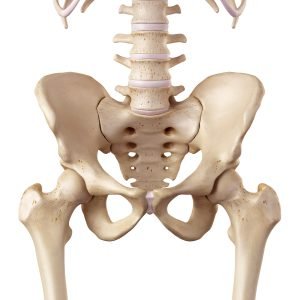Hip Resurfacing
A form of hip replacement, hip resurfacing aims toward maintaining the integrity of the joint. In traditional total hip arthroplasty, the hip surgeon removes the entire femoral head rather than capping it with the metal covering. During a hip resurfacing procedure, the surgeon shaves and caps the femoral head with a hemispheric metal covering to make a smooth surface. The surgeon then removes the damaged area of the hip socket and replaces it with a metal shell. The two surfaces seamlessly glide together to create a proper moving joint.
Who qualifies for hip resurfacing
A physician may recommend hip resurfacing for patients who have ailments within the hip joint but not yet ready for a total hip replacement.
Indications for hip resurfacing include:
A damaged hip joint causes a great deal of pain. Hip resurfacing decreases certain risks associated with traditional hip replacements but may increase the chances of some risks. Specialists have determined a higher risk of femoral neck fracture with hip resurfacing than with total hip replacement, but a lesser chance of hip dislocation. Performing hip resurfacing on a younger patient not yet ready for a total hip replacement makes it easy to later convert the patient to a total hip replacement.
Risks of hip resurfacing
Every procedure involving cutting the skin has potential risks or complications. Patients must make their provider aware of any allergies, medical history, and history of smoking or drinking. Possible risks and complications of hip resurfacing surgery include:
- Excess bleeding
- Blood clots
- Infection
- Nerve damage
- Femoral fracture
- Dislocation of the hip
How Surgeons perform hip resurfacing
Surgeons may have different surgical approaches when it comes to hip resurfacing. Hip resurfacing procedures typically take 2 to 3 hours depending on the exact injury. Patients receive general anesthesia for hip resurfacing. After using an antibacterial  solution to clean the area, the surgeon makes an incision on the thigh. The surgeon places the patient on traction and dislocates the hip. The femoral head gets trimmed and shaved down and the surgeon places a hemispherical metal cap on the head. The surgeon then removes the damaged cartilage on the socket and replaces the socket with a metal cup. The surgeon closes the incision and sutures which concludes the procedure.
solution to clean the area, the surgeon makes an incision on the thigh. The surgeon places the patient on traction and dislocates the hip. The femoral head gets trimmed and shaved down and the surgeon places a hemispherical metal cap on the head. The surgeon then removes the damaged cartilage on the socket and replaces the socket with a metal cup. The surgeon closes the incision and sutures which concludes the procedure.
Recovering from hip resurfacing
Each doctor has their own post operative care. Typically patients stay in the hospital for a few days. Patients utilize walking aids including crutches, a cane, or a walker. Depending on the level of the patients activities, patients may need a revision surgery between 10 and 20 years.
If you experience hip pain, call 817-375-5200 to make an appointment with a hip specialist today!


